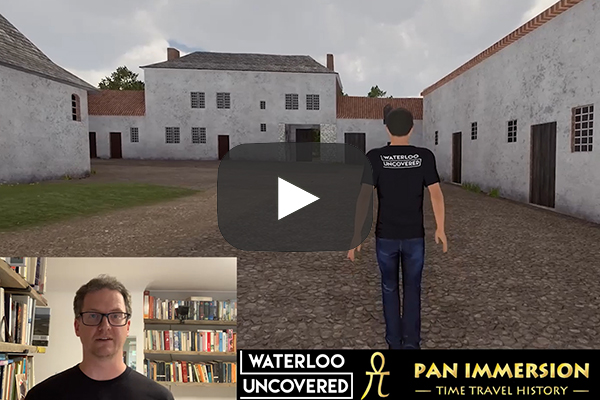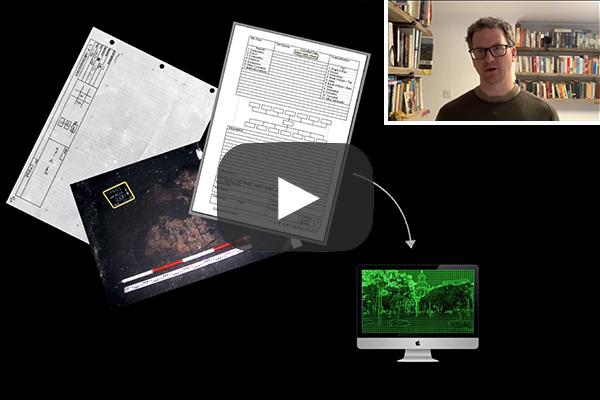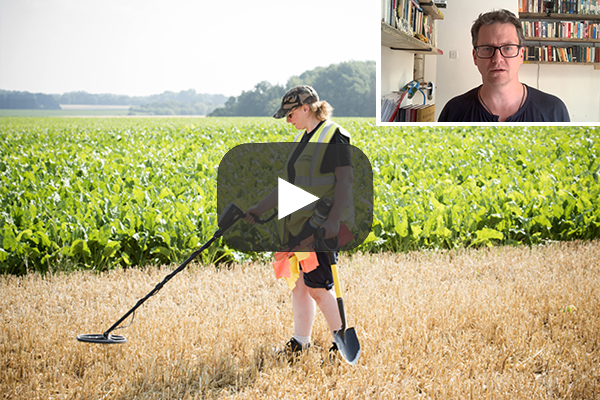An Introduction to Archaeology
Archaeology is the study of the human past through material remains. Typically, these remains are discovered through excavation, but can be found through a variety of different archaeological methods such as field walking, geophysical survey, metal detecting and aerial photography. Through these remains, archaeologists try to uncover how and where people in the past lived, what they ate, what they believed, how they spent their time, and who they were. Material culture produced by humans generally falls into two categories; artefacts, and features. Artefacts are portable objects made or used by humans, such as tools, pottery, jewellery, and weapons. At Waterloo, commonly found artefacts include musket balls, nails, coins, buttons, and other parts of uniforms or weaponry. Larger, non-moveable examples of human occupation on a site are called features. Features can include things like storage pits, buildings, walls and wells, and can include collections of objects such as trash pits or graves. Features found at Waterloo include the remains of a lavatory building discovered at Frischermont and the original footprint of the barn that stood by the North Gate at Hougoumont, as well as a pit used to dispose of amputated limbs at former Allied field hospital of Mont-Saint-Jean.
The same archaeological site can contain evidence of many different periods of occupation. At Hougoumont farm in Belgium, we have found artefacts from across a broad time spectrum, with finds ranging from medieval pottery to WWI buttons to reenactor’s kit from the bicentenary of the battle. Over time, layers of soil and debris build up in a process known as stratification, forming layers of slightly different colours that can be seen during excavation. The deeper the layer, the older it is, and the older the artefacts found within it will be.
Waterloo Uncovered have been digging at the site of the Battle of Waterloo in Belgium since 2015 with an international team of archaeologists and students from some of Europe's leading universities, under the guidance of our Archaeological Directors Professor Tony Pollard, Dr Stuart Eve, and Dominique Bosquet.
Many archaeological techniques have been utilised at Waterloo to aid in our excavations. An expert team of metal detectorists work alongside our archaeologists to guide where we should dig based on signals that they detect, and have been responsible for the discovery of some of our most exciting finds, including an enormous Howitzer shell and human limb bones found under a metal object at Mont-Saint-Jean. We have also conducted several examinations of areas of the battlefield using geophysical survey technology (including at Hougoumont Farm, La Haye Sainte and the lost chateau of Frichermont), in collaboration with organisations such as Ghent University’s ORBit research group and Liverpool John Moores University.
From 2021, Waterloo Uncovered will conduct the first ever systematic geophysical survey of the whole battlefield, made possible by a collaboration with academic partners at Bournemouth University and Ghent University. With the support of these institutions, from landowners around Waterloo, and from our local Belgian archaeology partners in AwAP (Agence wallonne du Patrimoine/Walloon Heritage Agency), we will soon be welcoming a new team member, in the form of a PhD candidate specialising in geophysical survey! The successful PhD candidate will undertake an ambitious project entitled ‘Waterloo Uncovered: Using Large-Scale Geophysical Survey to Investigate the World’s Most Famous Battlefield’. The student, under the tutelage of expert battlefield archaeologists and geophysicists, will carry out research that will guide the next five to ten years of Waterloo Uncovered’s excavation at the site of the Battle of Waterloo.

Virtual Tour of Hougoumont

Archaeological Databases and Records

Metal Detecting and Archaeology

A Guide to Commercial Archaeology

Remote Sensing and GIS
